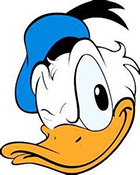National Geographic, the Incas
| série: | Tintin, étude |
| dessinateur / scénariste: | Collectif |
| éditeur: | Nat Geo EO 1938 |
| genre: | Etude |
| classement: | biblio1 |
| date: | 1938 |
| format: | broché |
| état: | BE+ |
| valeur: | 10 € |
| critère: | ** |
| remarques: | National Geographic magazine No. 2, February 1938 with three titles: 1/ castles and progress in Portugal 2/ the rise and fall of Nanking and 3/ the Incas: empire builders of the Andes - of Quechua origin, the building of the Inca realm, - the Inca masonry: centuries have passed, but Inca walls (like the Egyptian ones) still stand - the Incas, sons of the sun - the llama which in protest ejects from its mouth "a wonderful stinking water" as explained by an explorer - llamas and their longer-wooled relatives: the alpacas - the high priests of the sun, the snake-dancing, - Cuzco, ancient capital of the Incas - the temple of Pachacamac with the golden image of the sun where mummies have been found - the ruins of the citadel of Sacsahuaman - the citadel of Machu Picchu uncovered in 1912 - the habit of chewing the leaves of the coca shrub is widespread among Indians of the Andes to increase their physical endurance (cocaïn being extracted from coca) enclosurs - cover of national geo no 2 February 1938 - three Inca noblemen in discussion on the road painting by H.M. Herget - inca prince on the throne with priests and soldiers painting by H.M. Herget - view 1938 of Machu Picchu discovered 1912 by the expedition of Hiram Bingham further commentaries by Philip Ainsworth Means and paintings by H.M Herget commentaires et illustrations dont s'est grandement inspiré Hergé pour son histoire du temple du soleil principalement pour les personnages et leurs costumes |
| couvertures: |     |
Copyright 2008 - 2025 G. Rudolf
